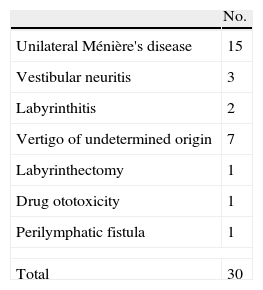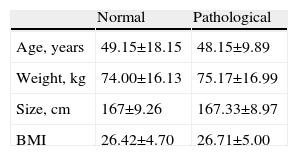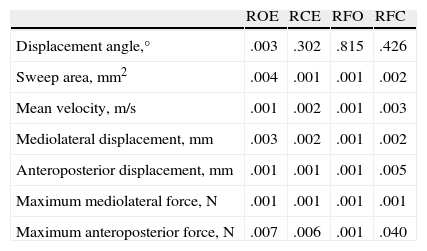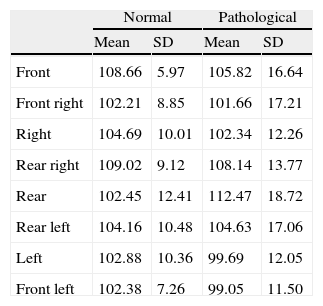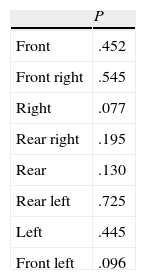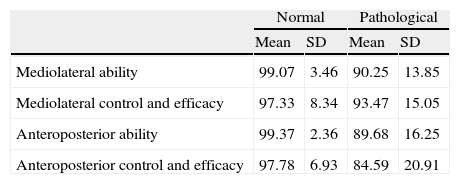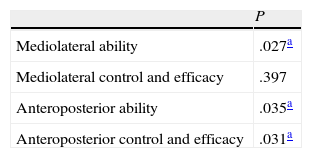Posturography allows us in evaluating postural control. This study showed the posturographic parameters that were useful for assessing the functional ability to maintain balance in our sample of vestibular patients.
Material and methodsOf a total of 89 patients, 59 were healthy subjects and 30 had a peripheral vestibular disorder. The subjects were studied using the posturographic NedSVE/IBV system, combining static (Romberg) and dynamic (stability limits and rhythmic weight shifts) tests. We then compared the measurements found in the groups.
ResultsNormal subjects showed significantly lower oscillations than our patients in all of the posturographic parameters studied (except the displacement angle). In testing the limits of stability, although normal subjects achieved maximum displacements greater than the subjects with the disorder, the differences found were not significant. In rhythmic weight shift tests, normal subjects showed more favourable results than did the vestibular patients, with significant differences in 3 of the 4 parameters studied: (1) anteroposterior ability, (2) mediolateral ability, and (3) anteroposterior control and efficiency.
ConclusionRhythmic weight shift tests and the static posturography test parameters used were useful in discriminating among the normal and pathological subjects in this study.
La posturografía permite evaluar el control postural de un sujeto. En este estudio se presentan aquellos parámetros biomecánicos del sistema de posturografía empleado, que han resultado útiles para valorar funcionalmente los pacientes vestibulares de nuestra muestra.
Material y métodosDe un total de 89 participantes, 59 eran sujetos sanos y 30 presentaban un trastorno vestibular periférico. Todos ellos realizaron un estudio posturográfico mediante el sistema NedSVE/IBV que combina pruebas estáticas (Romberg) y dinámicas (límites de estabilidad y control rítmico-direccional). Posteriormente se compararon las medidas halladas en uno y otro grupo.
ResultadosLos sujetos normales presentaron menores oscilaciones que los enfermos en los distintos parámetros posturográficos estudiados (excepto en el ángulo de desplazamiento) de forma estadísticamente significativa. En la prueba de los límites de estabilidad, aunque los sujetos normales lograron desplazamientos máximos mayores que los enfermos, las diferencias halladas no fueron significativas. En la prueba de control rítmico y direccional, los sujetos normales presentaron resultados más favorables que los patológicos y las diferencias fueron significativas en 3 de los 4 parámetros estudiados: 1) habilidad anteroposterior, 2) habilidad mediolateral, y 3) control y eficacia anteroposterior.
ConclusiónLos parámetros del sistema de posturografía estática empleado y la prueba de control rítmico y direccional resultaron de utilidad para discriminar entre los sujetos normales y patológicos de nuestra muestra.






